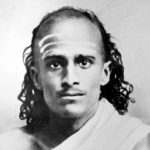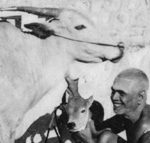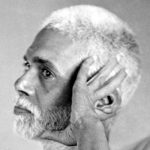This is the first chapter from The Fire of Freedom. It is primarily a dialogue between Papaji and a visitor on the nature and practice of self-enquiry.

Ramana Maharshi's life, teachings and devotees

This is the first chapter from The Fire of Freedom. It is primarily a dialogue between Papaji and a visitor on the nature and practice of self-enquiry.

This is a conversation taken from volume three of Nothing Ever Happpened. In it Papaji speaks about the role and function of the Guru.

Ramana Puranam is a poem jointly composed by Muruganar and Ramana Maharshi. This excerpt narrates how Muruganar came into contact with Bhagavan and how the two them eventually collaborated on this project.

This is the story of how Ganapati Muni gained his title ‘Kayvakantha’ (‘One who has poetry in his throat’) from an assembly of pandits while he was still a teenager.

Lakshmi the cow was one of the two devotees of Bhagavan to have her liberation publicly confirmed by Bhagavan himself. This article contains a long account I wrote on her about fifteen years ago. I originally posted it on my blog to refute a highly misleading account of her life that had appeared online.

When Ramana Maharshi lived at Virupaksha Cave in the early years of the last century, there were several sadhus who tried to drive him away because they were jealous of the numbers of devotees he was beginning to attract. This is an account of those early turbulent years.

Here is an account of how Robert Adams met Ramana Maharshi, followed by a dialogue in which he explains the process of self-enquiry.

Here are four accounts by devotees (Robert Adams, Rangan, Kunju Swami and Sadhu Natanananda) that stress the importance of focusing on what is truly important when one comes to Bhagavan.